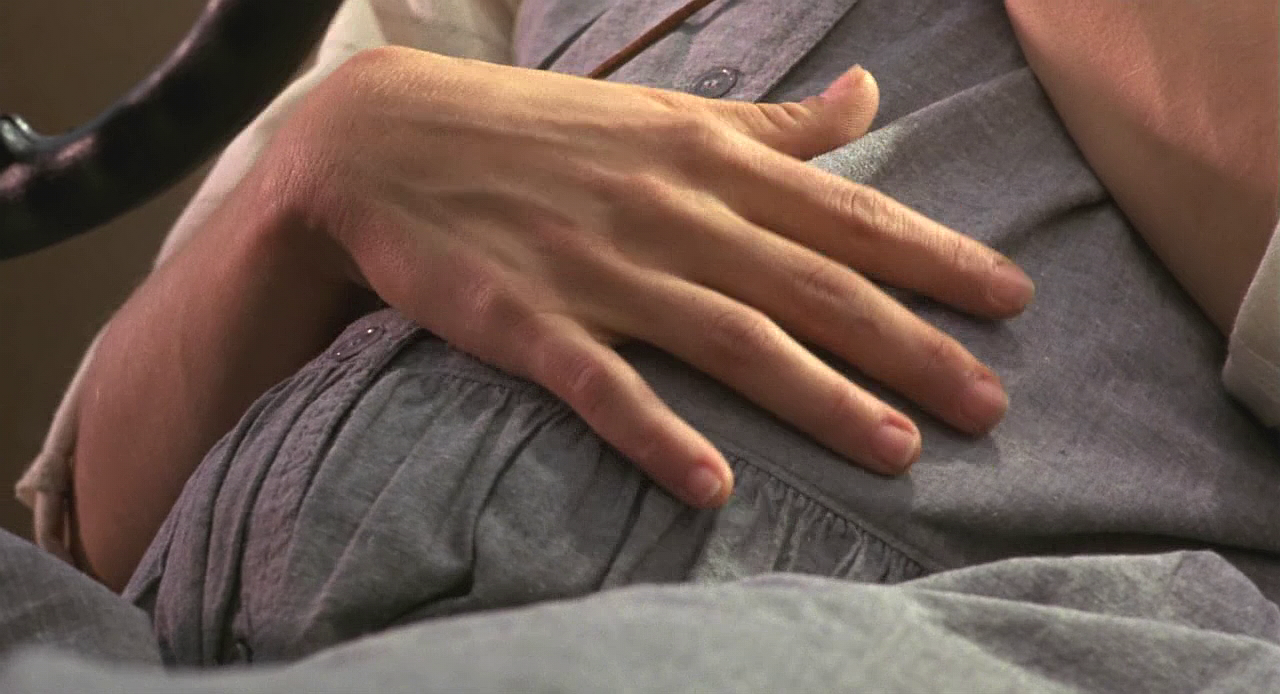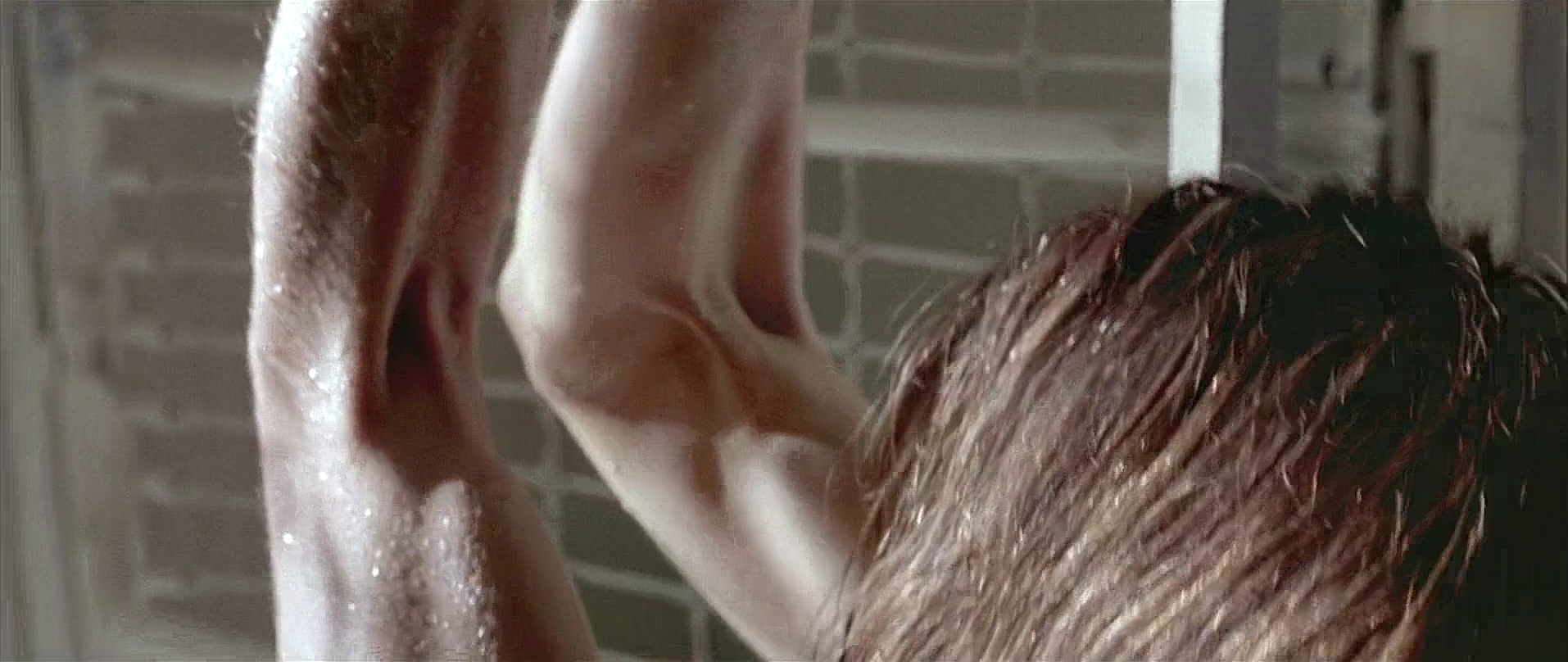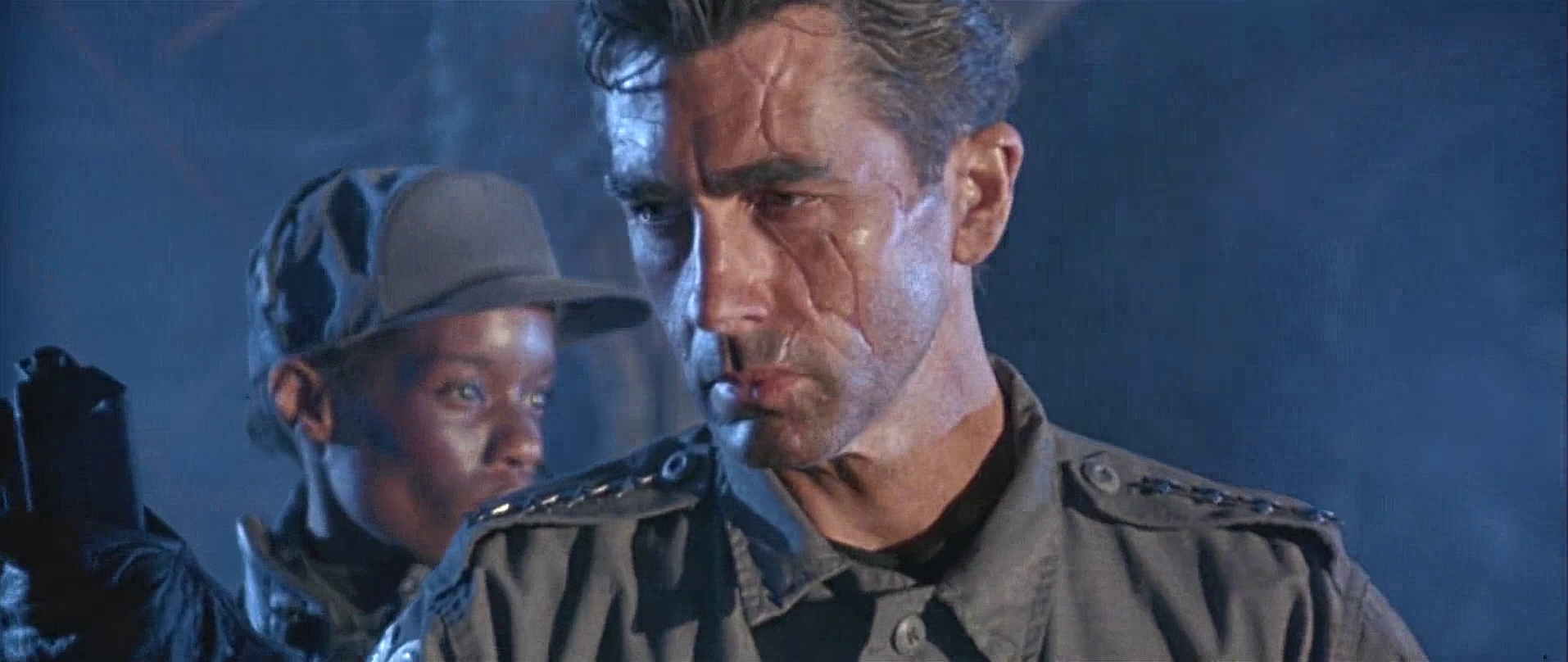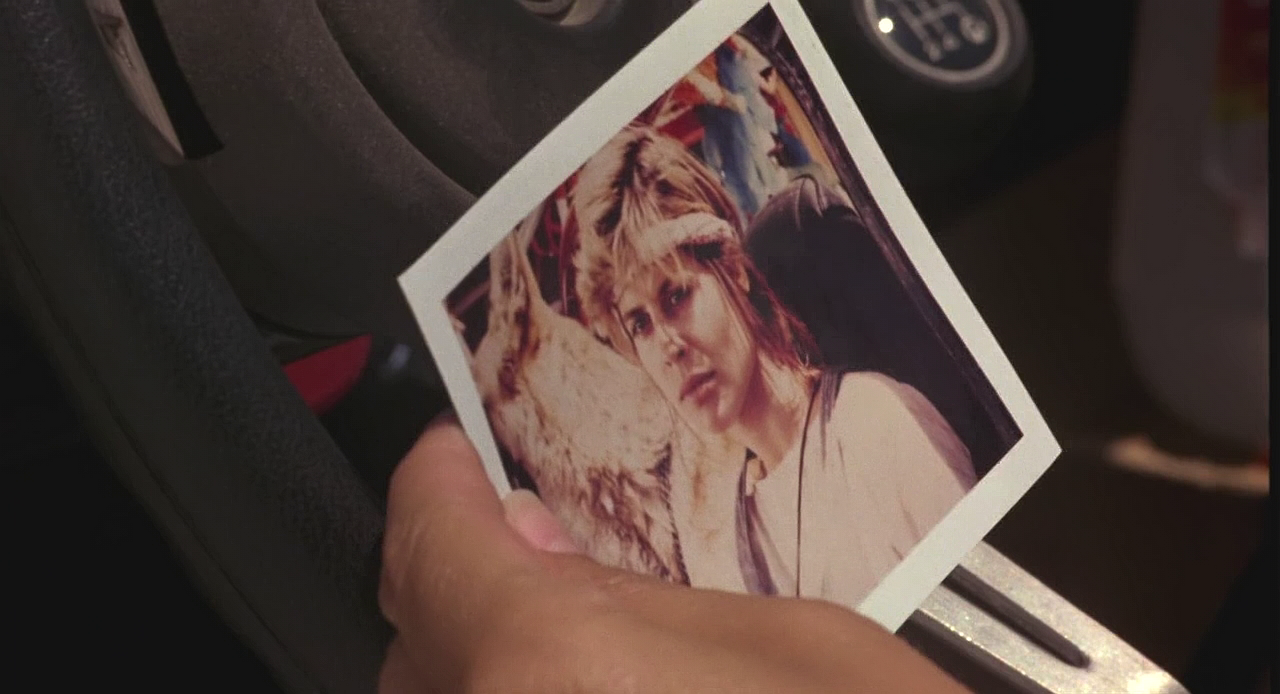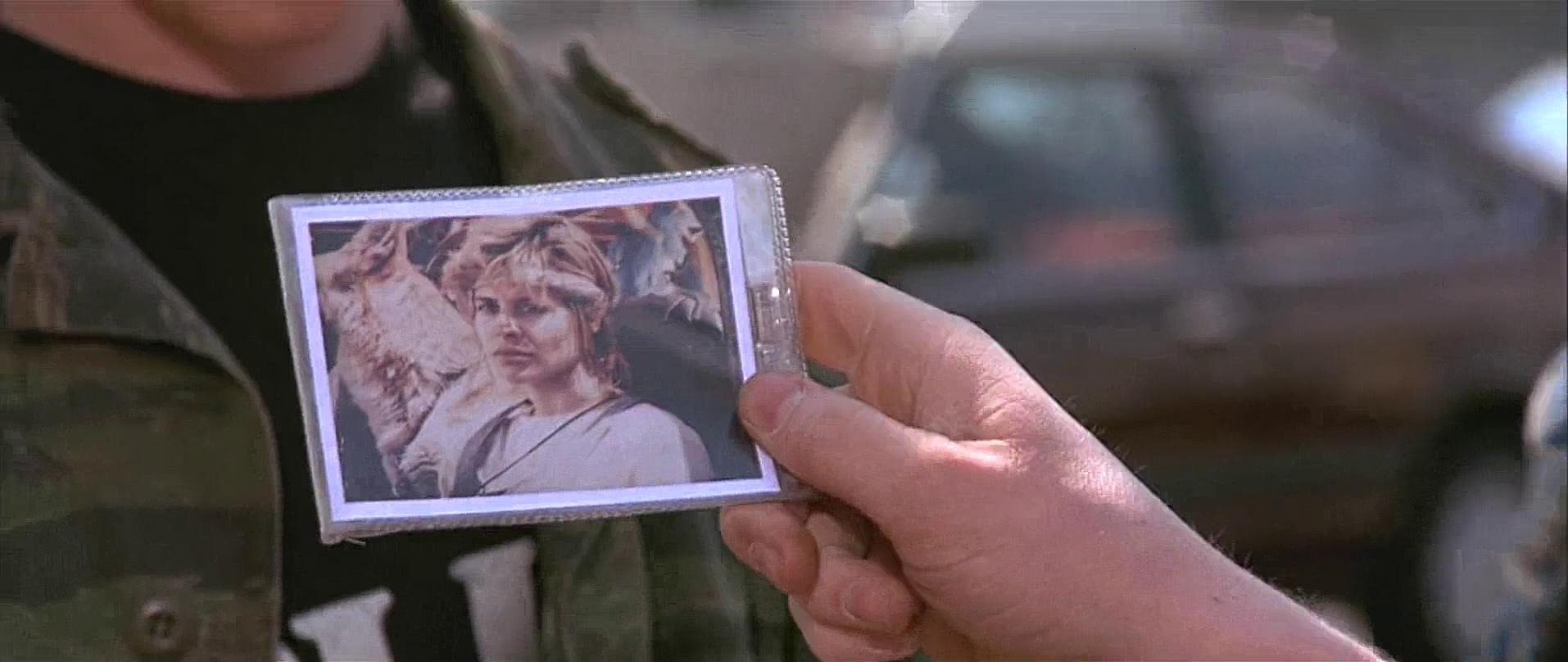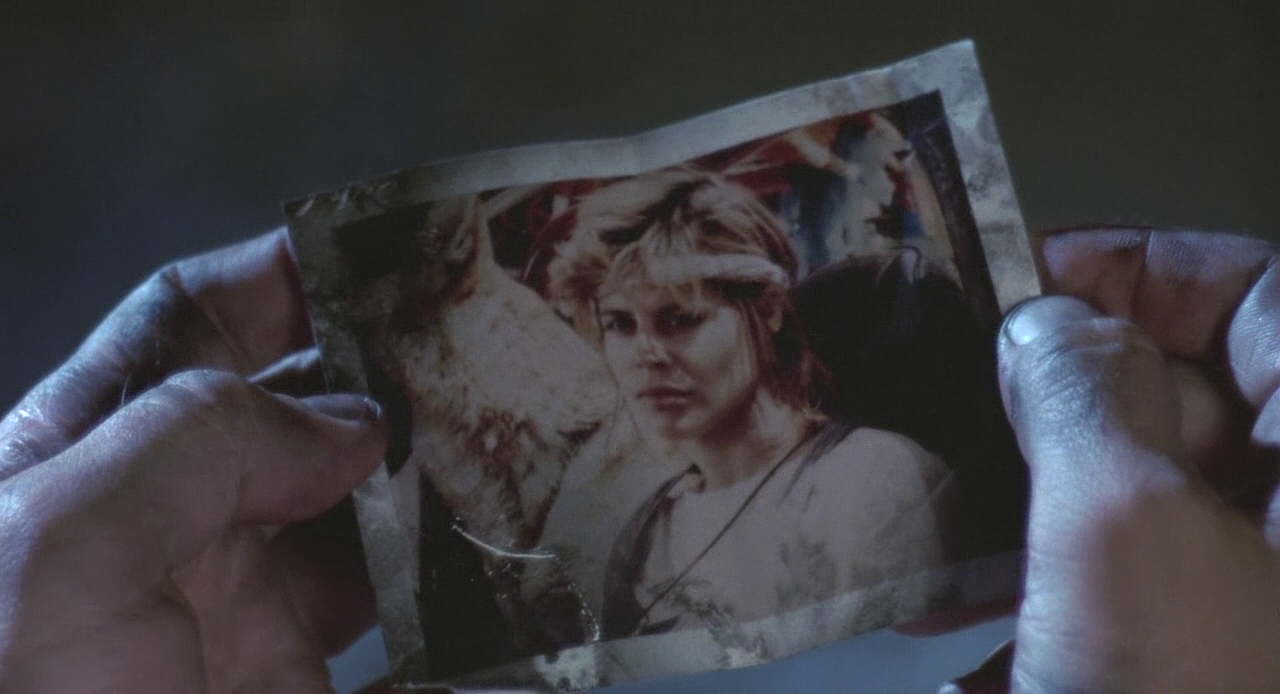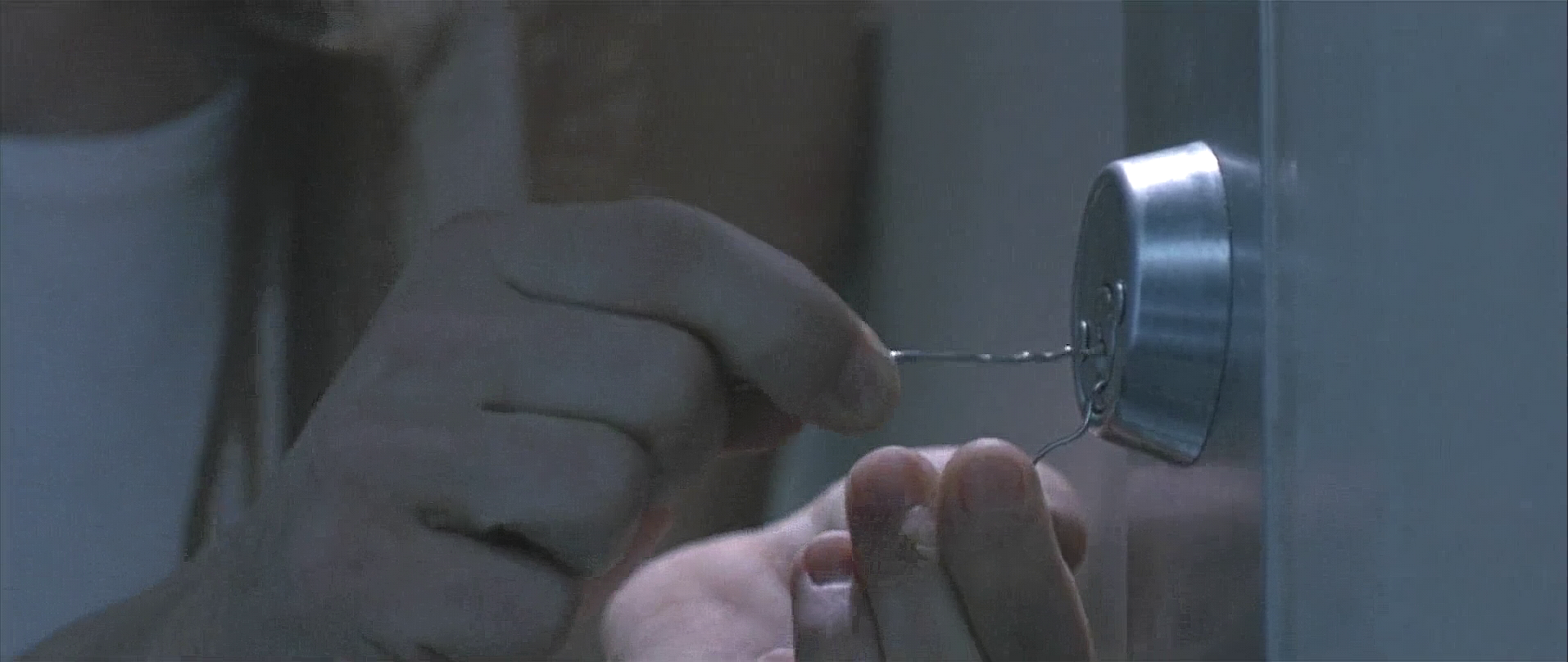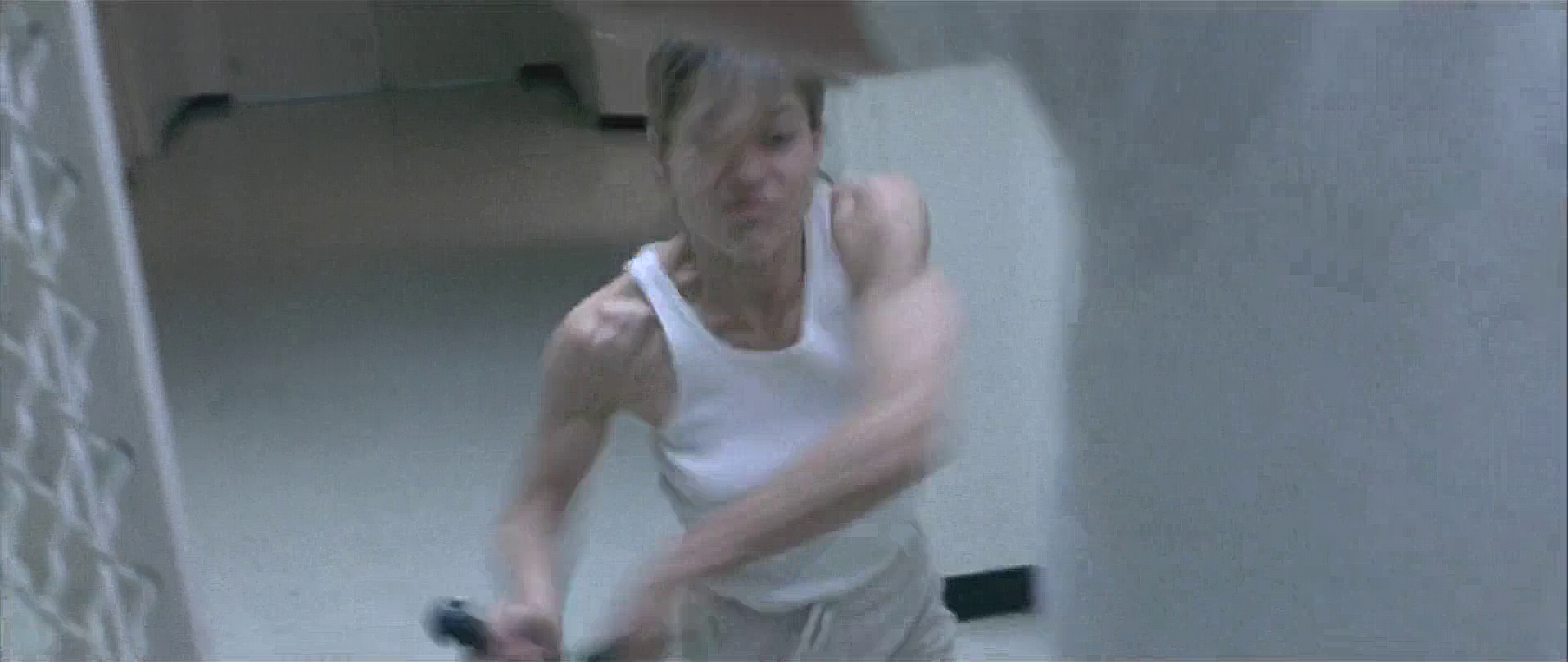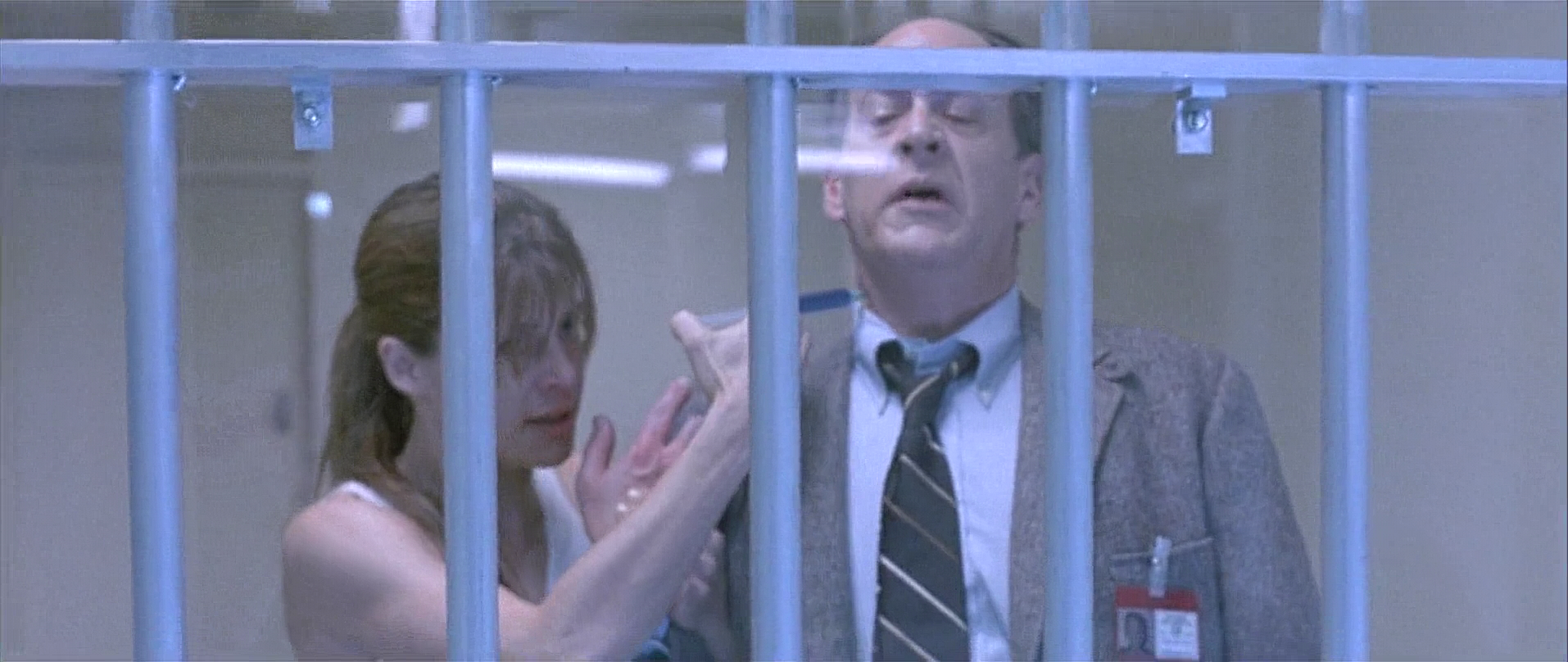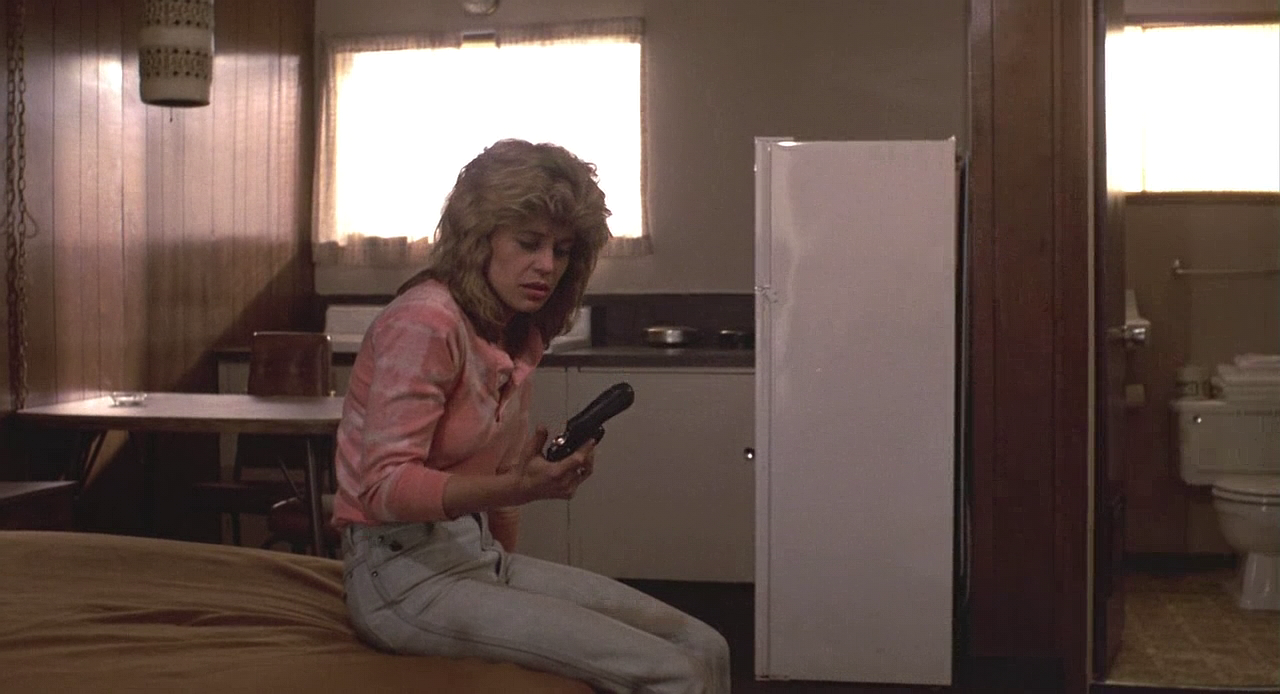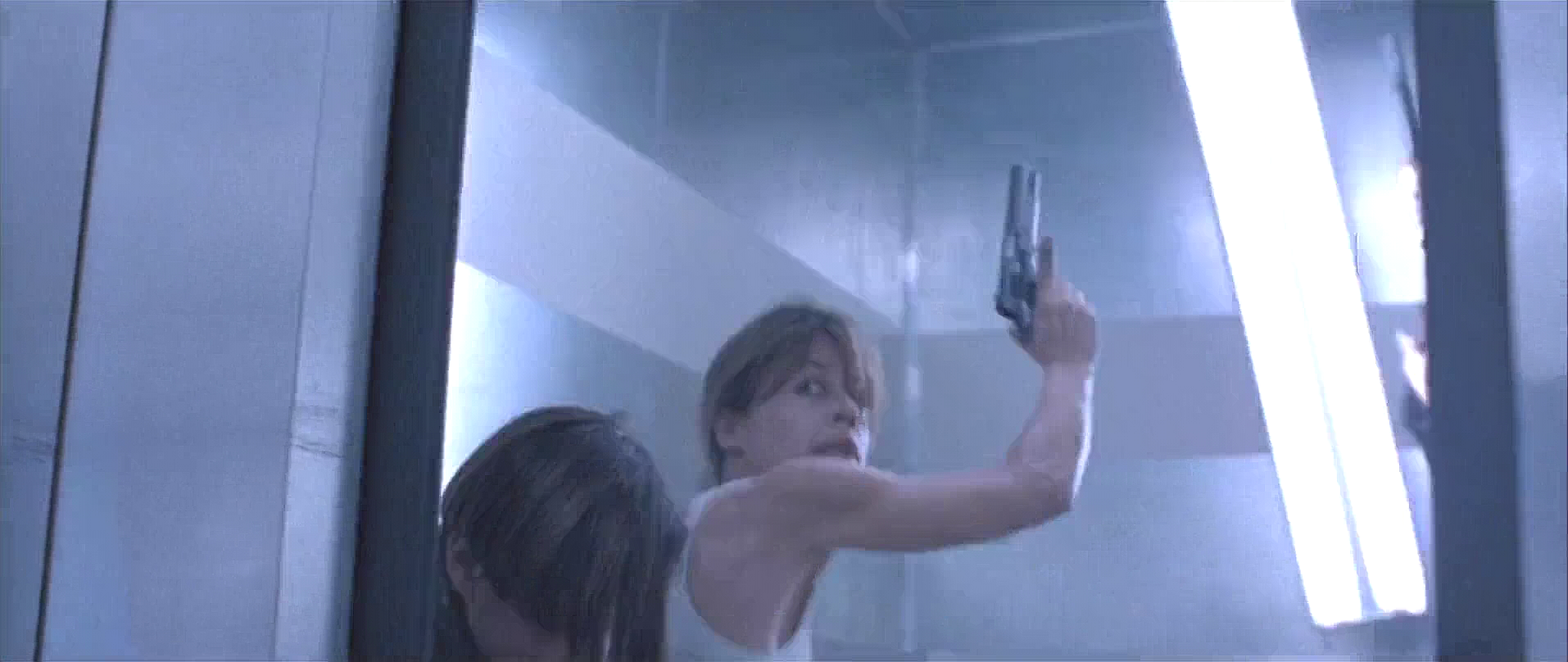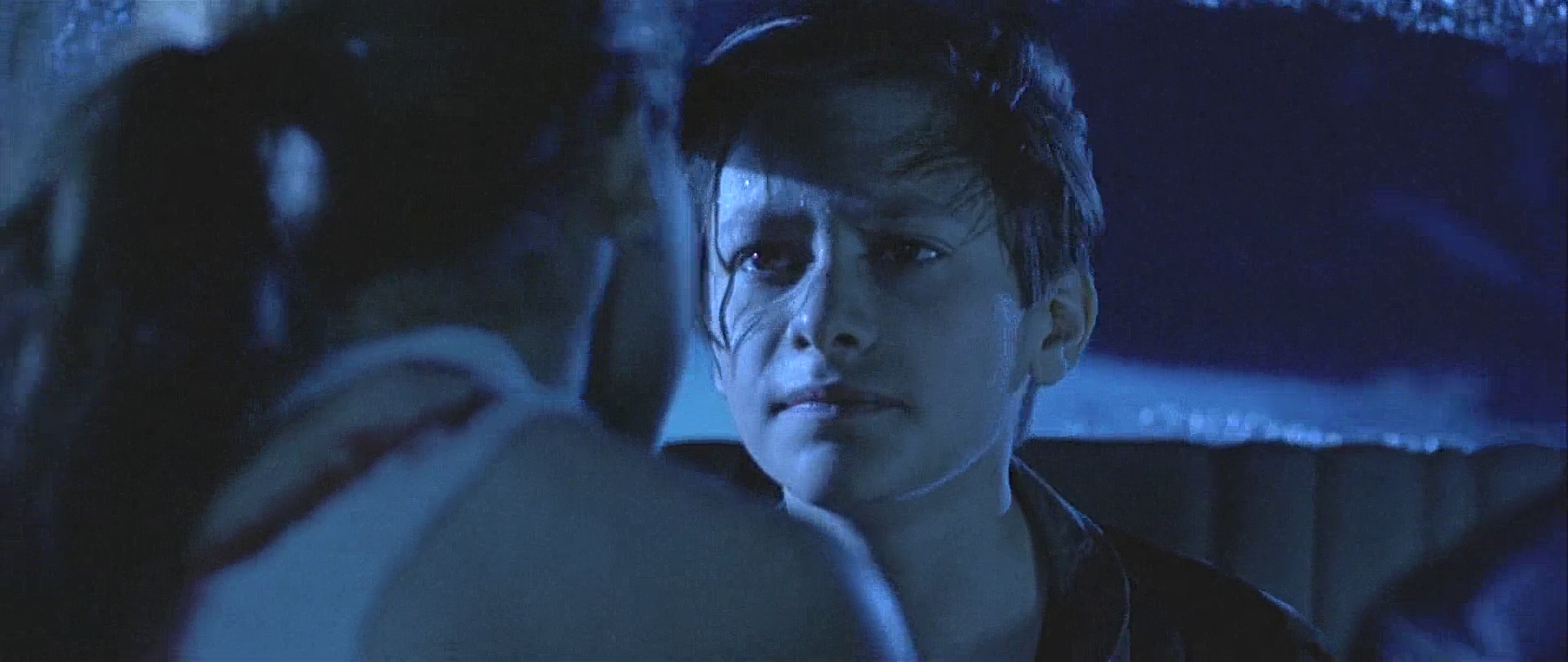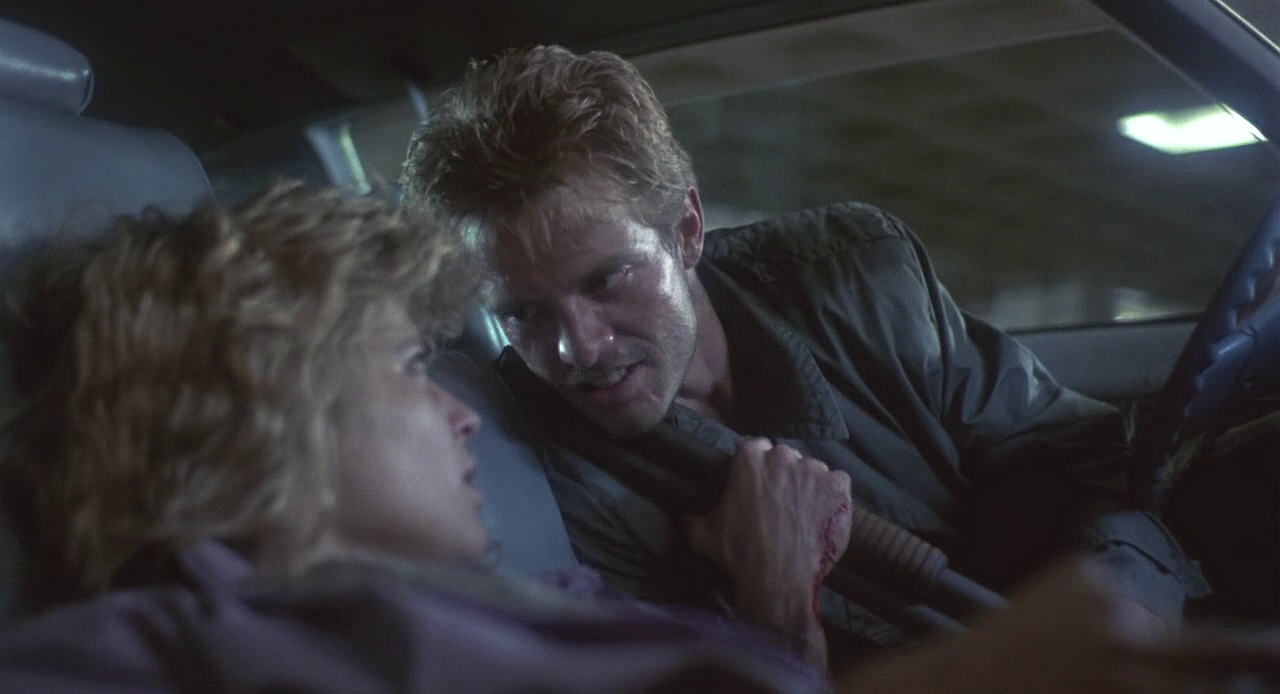She’s becoming more and more disconnected from reality as time goes on
Change is a difficult concept to pin down, because while the vessel is the same, something is different. We see this in T2 with Sarah Connor’s introduction:
We can see that this iteration of Sarah is a weapon – her narrow eyes and fatalistic determination are far removed from both the naïve teenager and expectant mother that we last saw in 1984. While a person changing over time is to be expected, these iterations of Sarah’s character are incompatible with one other - especially the teenager and Pescadero version. What’s key to note here (and demonstrated when we see Sarah’s therapy session) is that having existed in these previous phases, Sarah can travel back to those earlier times.
However, while those memories remain, the current iteration has overwritten the earlier Sarahs, and she is unable to relinquish her current perspective. In that sense then, it is possible for her to revisit her past, but only through the eyes of her current self. The Sarahs that existed before still remain on her timeline, but not at the current moment.
This demonstrates a paradoxical idea - that the iterations which we overwrite cease to exist, but also continue to influence us in our current form. This is demonstrated by John Connor:
In the future war, we see John as a battle-scarred, strategic, military commander. We also see him in nineties Los Angeles as a brooding, lost teenager – incompatible characters at polar opposites. However The teenage John takes actions that impact his adult iteration, and vice versa. What this demonstrates then, is that both versions exist at the same time, but also that one will supersede the other’s existence.
This idea of past, present and future self influencing one another may seem unfeasible, however consider its occurrence in reality. How often do the actions taken in our youth cause consequences later in life? Conversely, how often do we re-view our earlier years in our current iteration? What this then demonstrates is that our understanding of time is distorted. Rather than proceeding along a linear path, our existence is analogous to pieces on a chess board.
As a game progresses, many pieces are overwritten by others, i.e. ending their existence. While a piece may no longer occupy a place on the board, its previous existence continues to influence past, present and future events – this is reflected in our various iterations influencing each through time, and is also reflected by past, present and future John.
“The distinction between past, present and future is only a stubbornly persistent illusion."
-Albert Einstein
Beyond John, this idea is demonstrated in each characters’ actions, in that their past, present and future activities all result in consequences that affect the larger narrative.
This can be seen in how future John’s actions seem incomprehensible to teenage John. His disdainful retelling of his mother’s vision: “a great military leader” shows a different perspective to the messages that future John had Kyle Reese repeat to Sarah in 1984. What this then demonstrates, is that this current iteration of John must be overwritten in order for his future self to exist. The same point can be extended to the characters of Sarah and the T800, and beyond that, their overarching relationship.
Looking at Sarah’s current form, we can see that she has multiple layers of complexity. This is highlighted by Dr. Silberman’s observation regarding her tenuous grip on reality.
Dr. Silberman: “She’s becoming more and more disconnected from reality as time goes on.”
While Sarah understands a layer of reality beyond Silberman’s grasp; on a another level, his assessment rings true. This can be seen in her inability to outgrow her past. If she is to survive the current turn of events, then she must overwrite her earlier iteration.
We see this during Sarah’s escape - her actions show both her new character post T1, but also an inability to detach from her past self.
Regarding her new persona, we see that Sarah is well trained: using weaponry and CQC techniques on the staff. She combines economy of motion with knowledge of bodily weaknesses. Added to this, her interaction with Silberman gives insight into the rationale she developed post T1:
Silberman: “It won't work, Sarah. You're no killer. I don't believe you'd do it.”
Sarah Connor: “You're already dead, Silberman. Everybody dies. You know I believe it, so don't fuck with me!”
Alongside echoing Kyle Reese’s Cassandra-like fate, we see surprising developments in her character. Sarah’s threat to Silberman: “There are 215 bones in the human body… that’s one.” Is similar to the T800’s statement: “I have detailed files on human anatomy”. Both of them using this knowledge to be more efficient in combat. This is further demonstrated during the lift escape. We see Sarah proactively taking a gun and using it in self defence. Compared to how she handled a gun under Reese’s protection, this is not the same person.
However, in spite of this change, when she sees the latest T800, all of her preparation disappears. In a blind panic, she forgets her abilities, and her current situation, then doubles back towards her pursuers, and gets recaptured. This demonstrates that although Sarah has overwritten key parts of her earlier self, she is yet to usurp the terrified teenager she once was.
In addition to this arrested development, post-escape we see that both mother and son have perspectives which are firmly rooted in the past:
The reunion scene is shot in an icy, metallic blue - signifying the mechanical nature of the mother – son relationship. Sarah is unable to connect with her son on an empathic level, and instead searches for injuries. This is not the teenager who was repulsed by Reese’s gunshot wound, nor is this the triumphant reunion that John was expecting. There’s an emotional austerity in Sarah, which is then echoed by John’s dismissal of his tears. In this scene we can see that both are wearing two layers of armor: one to protect from the future, the other to protect from the present; the result then, is that they are both prisoners of their past.
“That’s the trouble with armor. It won’t protect you from what you are.”
The Masao, Armor - John Stakely
What we see in John is a lost child – his criticism from his mother doesn’t stop his love for her, but it reduces his faith in himself – doubting his judgement and stalling his development. It is inconceivable that this John will lead humanity against the machines, yet a later iteration of him does. This means that his identity is not static, and will undergo a radical change. This is also evident in Sarah and the T800, who have no chance of defeating the T1000 in their current iterations.
T800: “In three years, Cyberdyne will become the largest supplier of military computer systems. All stealth bombers are upgraded with Cyberdyne computers, becoming fully unmanned. Afterwards, they fly with a perfect operational record. The Skynet Funding Bill is passed. The system goes online August 4th, 1997. Human decisions are removed from strategic defense. Skynet begins to learn at a geometric rate. It becomes self-aware at 2:14 a.m. Eastern time, August 29th. In a panic, they try to pull the plug.”
When the T800 recounts the future war, it echoes Reese’s description of the future, especially as it is relayed without visual representation.
The objective description of Skynet’s awakening results in a chilling account of Judgement Day. There’s no bias or subjective narrative, instead it’s the cold, hard truth. The T800’s explanation is reminiscent of author Robert Heinlein’s future history, (a major influence on Cameron), in that it reflects where society is headed on its present course. The events are relayed step by step and take on a time bending effect - as if we are watching a car crash unfold in slow motion. Added to this, the retelling takes on the effect of a ‘black swan event’ – in that while it was a surprise in the moment, after the fact, the outcome appears obvious and should have been predicted. Due to the perceived predictability of the event then, questions arise around why the incident wasn’t prevented.
This leads to a more challenging point.
With the benefit of hindsight, we can gain perspective, however, why does there have to be an overstepping of the mark before we can receive insight?
Beneath this point lies a reality which is difficult to accept.
To change what we see unfolding before us is to admit that a new identity must overwrite the current iteration of ourselves. Simply put, if we want to change something we need to change ourselves first.
“Everyone thinks of changing the world, but no one thinks of changing himself.”
― Leo Tolstoy


